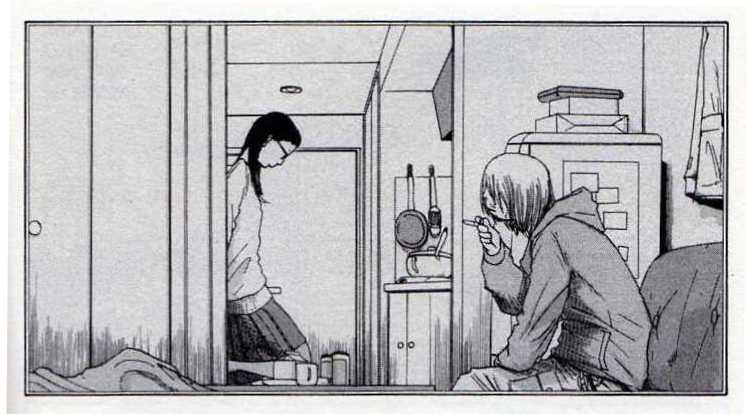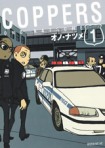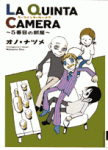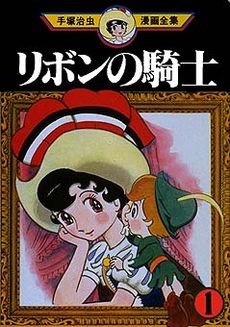Panels by Kiyohiko Azuma make everything more cheerful, don’t you think? Anyway, here’s the link to this week’s Flipped, which will also be the last installment of that column. I explain everything there. It’s a good thing.
He's just not that into you
Dude… harsh. That’s Naoki Irie from Kaoru Tada’s Itazura Na Kiss (Digital Manga), which just happens to be the subject of this week’s Flipped. It’s a very enjoyable comic in its own right, and I think it’s interesting to consider it in context, particularly when that context is inspired by Shaenon K. Garrity.
Ono, Ono, Ono
Hey, are you sick of me obsessing over Natsume Ono? If so, this week’s Flipped is probably not for you. And I make no promises about the situation improving in the future. And yes, I am illustrating my blog like a teenager pasting magazine covers to the inside of my locker. I make no apologies.
Wishes, hopes and dreams
 After what feels like a solid month of gray skies and falling snow, it’s therapeutic to think of good things to come, like ice-free roads, the color green, and temperatures above freezing. That kind of optimism (or mitigation) was the inspiration for this week’s Flipped. But you know what? Awesome as those titles may well prove to be, I’m hoping they’re joined and perhaps even trumped by another 2010 possibility.
After what feels like a solid month of gray skies and falling snow, it’s therapeutic to think of good things to come, like ice-free roads, the color green, and temperatures above freezing. That kind of optimism (or mitigation) was the inspiration for this week’s Flipped. But you know what? Awesome as those titles may well prove to be, I’m hoping they’re joined and perhaps even trumped by another 2010 possibility.
Last week, a certain publisher was teasing the Twitterati about an imminent announcement of a new license of a work by Osamu Tezuka featuring a “great female lead.” If you’re me, this can only mean one thing.
I could be wrong, but I’ll let that mistake live in my heart for as long as contrarian reality allows. This would make a certain publisher the fulfiller of two of my license requests, not to mention the only publisher to fulfill any at all. It’s a good thing I don’t make any unseemly promises when I make these requests.
Okay, back to the exciting books we know we’re going to get in 2010: one of them is by Fumi Yoshinaga, who has a one-shot coming out soon, courtesy of Viz. Christopher Butcher also adds Yoshinaga’s Antique Bakery (DMP) to his roster of Ten Manga That Changed Comics. It’s an excellent choice, and I thought it was a particularly intriguing one in juxtaposition to his other recent choice, Gutsoon’s Raijin Comics. Raijin fairly dripped testosterone, as Chris notes, but what some might forget is that DMP’s manga catalog was also quite the men’s locker room pretty much right up until the publication of Antique Bakery. Bambi and Her Pink Gun, Worst, IWGP and the Robot anthology were the books that defined DMP’s output prior to the launch of Juné, and Antique Bakery certainly seems like the fulcrum point for that shift.
Please stand by
I forgot to mention it earlier this week, but Flipped will be on a brief hiatus during The Comics Reporter’s Holiday Interview series. I’m very flattered that Tom Spurgeon has provided a home for the columns, and I was also flattered that he asked me to participate in the series. It’s here, a lengthy chat on the craziest Osamu Tezuka manga I’ve read to date.
This would be on it
No, don’t ignore him! Pictured above is Yuki, the protagonist of Taiyo Matsumoto’s fascinating GoGo Monster (Viz), which is the subject of this week’s Flipped. I have to say, there’s been a ferocious quantity of really good manga this year, and GoGo Monster is certainly in that category.
Given that ferocious quantity, I do find myself wondering why so little of it is making its way onto year-end lists of incredible comics. It’s reaching the point that I really feel compelled to come up with some craven way to do a “Best of” list without actually describing as such, leaving me the kind of plausible deniability that is my watchword as a blogger. I mean, I’m not remember 2009 incorrectly, am I? There was an avalanche of great stuff, right?
Snow storm
This week’s Flipped takes a look at a late but deserving entry into the list of possible best books of 2009, Susumu Katsumata’s Red Snow from Drawn & Quarterly. While pulling together illustrations for the column, I noticed that the cover design had changed rather drastically from solicitation to finished product.
Here’s the solicitation version:
And here’s the final:
I much prefer the final version. It’s much more in keeping with the content, and I love that it has an almost woodcut quality. The earlier version seems rather generic and lacks the earthiness that makes the stories so interesting. The first version is also sexy in an almost pandering way, I think, and it strikes me as sort of a bait-and-switch. Going in a different direction was a very good choice.
Just out of curiosity, I wondered what other versions of the book looked like. Here’s the Japanese version collected by Seirinkogeisha:
It’s nice, but it strikes me as a little delicate. It’s more in keeping with the content, but, again, it doesn’t have the grounded quality of the stories. Here’s the French version, published by Editions Cornélius:
It’s attractive in a bandes dessinées kind of way, though I still don’t find it as striking as the D&Q version. I know (or think) there’s a Korean version out there, but I’m not having any luck finding an image of the cover. I’d love to get a look at it, so if you have more success than I do, send me a link. And let me know which one you like best.
Glug
This week’s Flipped is up. Just out of curiosity, is negatively reviewing a Tezuka comic a mortal sin or just a venal one? I’m guessing it’s mortal, but I also figure it probably doesn’t matter at this point in my distinguished career. I mean, I’d put Blankets and New Frontier on the list of the Best Books of the ’00s I Couldn’t Force Myself to Finish Reading, and I’ll never repent that, so I’ve probably got a one-way ticket straight to comics hell with my name on it.
As windy as this week’s column may seem, know that it’s the result of judicious editing on my part. I had this whole section mapped out about how, even though Swallowing has a lot of problems, you can see a lot of its ideas put to better use in Naoki Urasawa’s 20th Century Boys, but then I realized that if one started writing about the ways Urasawa repurposes Tezuka (really, really well, I hasten to note), it would be a five-parter.
Compounded gratitude
I’m clearly in sync with Kate Dacey, which is always reassuring. Here’s her opening line from this week’s Shipping News post:
“I’m not one for gratitude journals or other exercises in forced thanksgiving…”
And here’s an early sentence from this week’s Flipped column:
“I can’t say that it makes me particularly contemplative in the intended way, and I’m relieved that there’s no tradition in my family of going around the table and expressing individual gratitude before we can gorge.”
We’re even grateful for some of the same things!
It's like that sometimes

This week’s Flipped is up, examining Inio Asano’s perfectly likable, accomplished What a Wonderful World!, a two-volume set of loosely interconnected stories about the kind of people pictured above.













